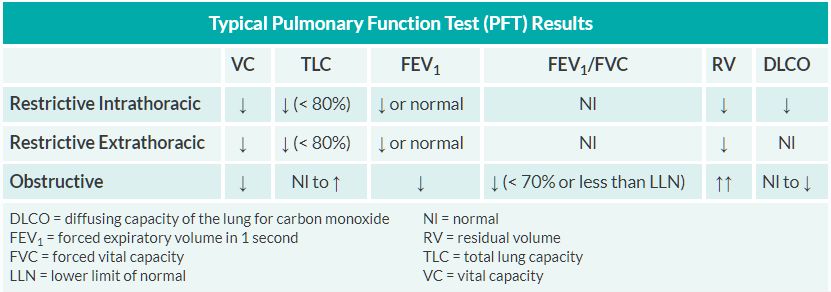PULMONARY FUNCTION TEST
SUMMARY
1. FEV1, FVC & TLC < 80% or RV > 120% are abnormal.
2. TLC is decreased in restrictive lung disease. Extra-thoracic (obesity, kyphosis) vs. intra-thoracic causes (ILD, parenchymal disease).
3. Expiratory flow rate (ratio of forced expiratory volume in 1 sec to FVC; FEV1/FVC) < 0.7 (70%) is diagnostic of obstructive lung disease. Causes: asthma, COPD, bornchiectasis, cystic fibrosis. Significant bronchodilator reversibility is defined by a 12% and greater than 200 mL increase in either FEV1 or FVC, or both.

Reference(s)
Wilkinson, I., Furmedge, D. and Sinharay, R. (2017). Oxford handbook of clinical medicine. Oxford: Oxford University Press. Get it on Amazon.
Feather, A., Randall, D. and Waterhouse, M. (2020). Kumar And Clark’s Clinical Medicine. 10th ed. S.L.: Elsevier Health Sciences. Get it on Amazon.
Hannaman, R. A., Bullock, L., Hatchell, C. A., & Yoffe, M. (2016). Internal medicine review core curriculum, 2017-2018. CO Springs, CO: MedStudy.
Therapeutic Guidelines. Melbourne: Therapeutic Guidelines Limited. https://www.tg.org.au [Accessed 2021].